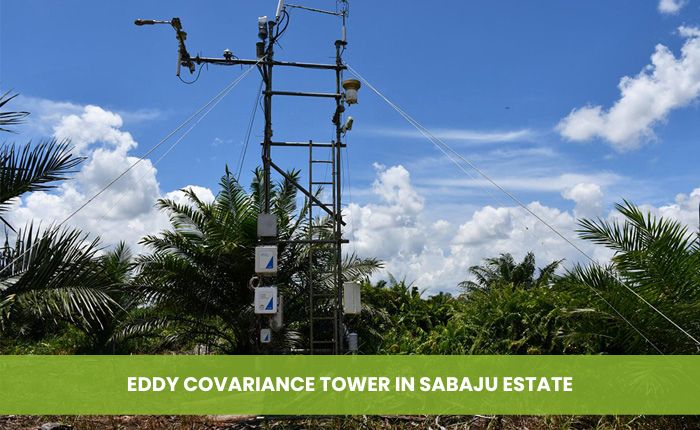Our 3 main collaborative programs that support the environmental research are illustrated below:
- Balancing Development of Oil Palm Plantations with Conservation of Tropical Forest Ecosystems

LOCATION
-
- Lambir 2 Estate, Miri
COLLABORATORS
-
-
- SOPB
- Malaysian Palm Oil Board (MPOB)
- Nagoya University of Japan (NU)
-
PURPOSE
-
-
- To quantify and monitor Carbon (C) and Nitrogen (N) flux of oil palm plantation using Eddy Covariance Tower in Lambir 2 Estate.
- To monitor and capture temporal environmental changes that affect Carbon (C) and Nitrogen (N) dynamics in Oil Palm Plantation.
-
2. Ecosystem Carbon and Nitrogen Dynamics of Tropical Peatland




LOCATION
-
-
- Sebungan/ Sabaju Estate, Sebauh, Bintulu
-
COLLABORATORS
-
-
-
- SOPB
- Malaysian Palm Oil Board (MPOB)
- Param Agriculture Survey Sdn. Bhd.
- University of Aberdeen
- University of St. Andrews
- University of Leicester
- National Taiwan University
- University of Hyogo
- University of Exeter
-
-
PURPOSE
-
-
-
- To determine the overall GHG balance of oil palm plantations on peat by quantifying land-atmosphere fluxes of carbon dioxide (CO2) methane (CH4) nitrous oxide (N2O) and nitric Oxide (NOx; a precursor to tropospheric ozone, a strong GHG and environmental pollutant.
- To investigate how primary productivity, carbon (C) dynamics and C Sequestration rates respond to changing environmental drivers (e.g. photosynthetically active radiation, rainfall, temperature, moisture, water table depth, nutrient availability).
- To quantify N gas (N2O1 NOx) from fertilizer and ecosystem N retention in oil palm plantations on peat, in order to evaluate the proportion of fertilizer N lost to the atmosphere and the efficacy of current fertilizer management practices.
-
-
PUBLICATIONS
-
-
-
- THE POTENTIAL OF OIL PALM IN THE GLOBAL CARBON CYCLE
- TOWARDS A FULL GREENHOUSE GAS BALANCE OF MANAGED TROPICAL PEATLANDS IN NORTHERN BORNEO
- SOIL-ATMOSPHERE TRACE GAS EXCHANGE FROM TROPICAL OIL PALM PLANTATIONS ON PEAT
- CARBON STOCKS AND FLUXES IN MANAGED PEATLANDS IN NORTHERN BORNEO
- QUANTIFYING TROPICAL PEATLAND DISSOLVED ORGANIC CARBON (DOC) USING UV-VISIBLE SPECTROSCOPY
- FLUVIAL ORGANIC CARBON LOSSES FROM OIL PALM PLANTATIONS ON PEAT
- METHANE AND CO2 FLUXES FROM PEAT SOIL, PALM STEMS AND FIELD DRAINS IN TWO OIL PALM PLANTATIONS IN SARAWAK, BORNEO, ON DIFFERENT TROPICAL PEAT SOIL TYPES
- APPLICABILITY OF OPTICAL SCANNER METHOD FOR FINE ROOT DYNAMICS
-
-
3. Unmanned Aerial Vehicle (UAV) Derived Structure-from-Motion Photogrammetry Point Clouds for Oil Palm (Elaeis guineensis) Canopy Segmentation and Height Estimation

LOCATION
-
-
-
- Sebungan/ Sabaju Estate, Sebauh, Bintulu
-
-
COLLABORATORS
-
-
-
-
- SOPB
- Malaysian Palm Oil Board (MPOB)
- University of Exeter
- Tropical Peat Research Institute
-
-
-
PURPOSE
-
-
-
-
- To demonstrate a workflow for the retrieval of single palm canopies from SfM point clouds.
- To quantify the uncertainties introduced by the acquisition scheme and steps in SfM-based workflow as well as in the retrieved metrics.
- To derive and assess top-frond height (TFH) and stem height metrics from single palm SfM point clouds.
-
-
-
CORRECT AS OF 2 JANUARY 2020
